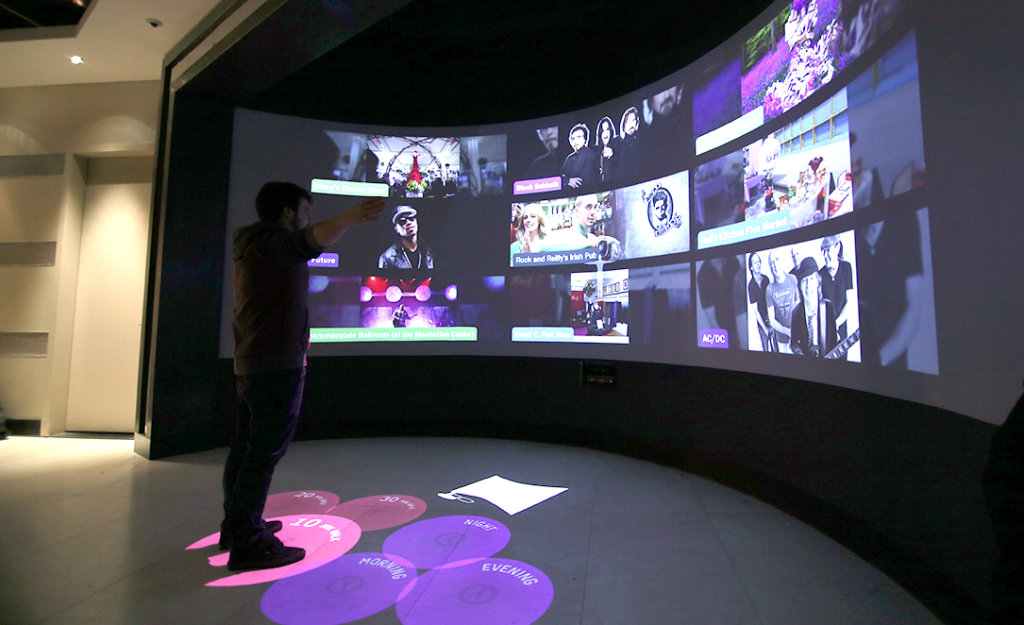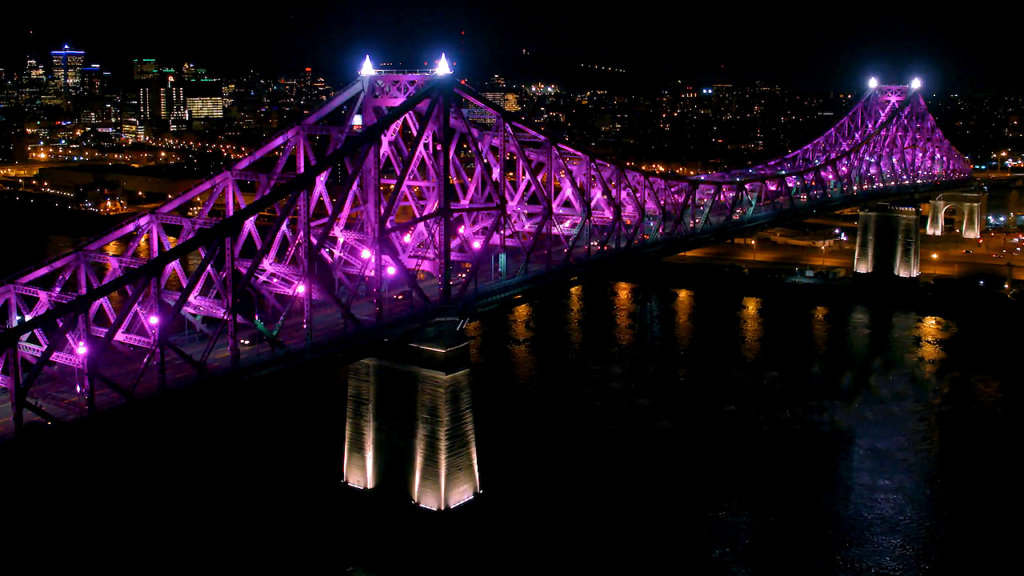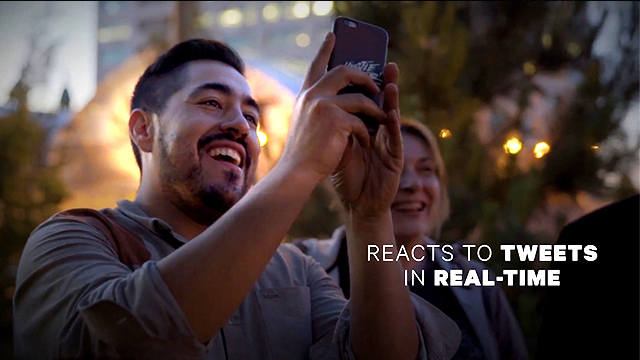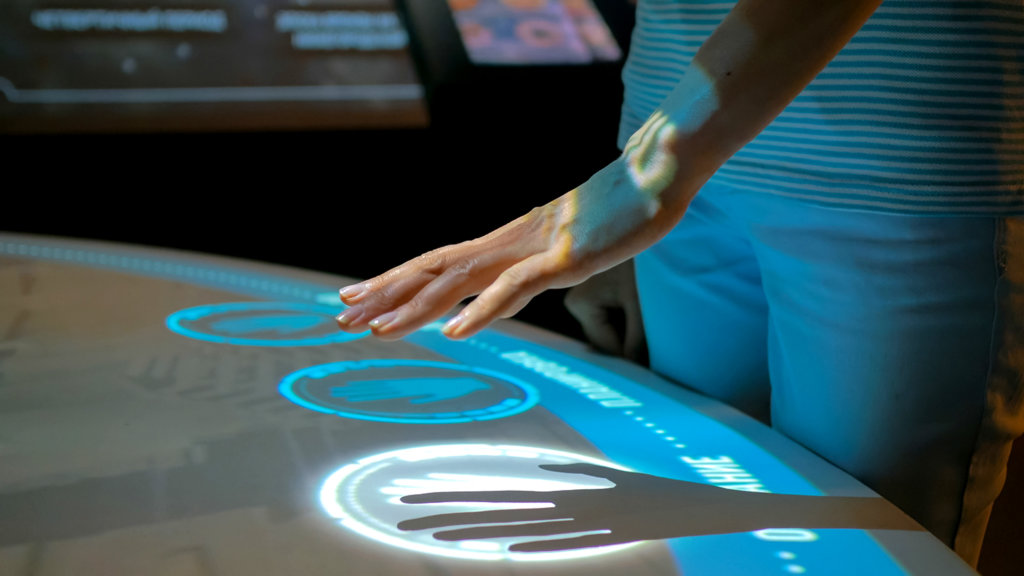How Will Technologies Shape Our Interactions and Spaces in the Post-Confinement Era?
- Blog Posts
- White Papers
In a post-confinement world, human beings will seek the exact opposite of what will be prescribed to them: in the face of social distancing, we will want to get closer to each other again; at the prohibition of touch, we will want to smell and taste the things we had enjoyed; faced with rules and regulations about where we go and how we move through spaces, we will seek fluidity and freedom. We are, by our very nature, social creatures.
Over the past 20 years, Thinkwell Studio Montréal has evolved the nature of its interactive projects based on the concept of ambient intelligence. The idea is very simple: the interface is not a screen, the interface is the world we live in.
 Take, for example, our Renaissance Hotel Experience in New York where the body of each guest becomes the communication device between the hotel and its district. Through a partnership with Time Out Magazine, a digital concierge interacts with each visitor to offer them culinary or cultural activities depending on the weather, their desires, and the amount of time they want to spend walking. Using a 3D camera detection system, we were able to detect multi-user signals (body posture and movement, group behavior, eye tracking, and emotion recognition) and transform the experience of the lobby. Let’s imagine that this experience could be adapted for hospital or university spaces. On a university campus, for instance, a digital concierge would become a mobile engagement platform where every student becomes the heart of her or his own journey; a generative digital assistant in real-time that adapts the student successfully navigate not only the demands of their classes and deadlines but also the social, cultural, and sporting life of the community.
Take, for example, our Renaissance Hotel Experience in New York where the body of each guest becomes the communication device between the hotel and its district. Through a partnership with Time Out Magazine, a digital concierge interacts with each visitor to offer them culinary or cultural activities depending on the weather, their desires, and the amount of time they want to spend walking. Using a 3D camera detection system, we were able to detect multi-user signals (body posture and movement, group behavior, eye tracking, and emotion recognition) and transform the experience of the lobby. Let’s imagine that this experience could be adapted for hospital or university spaces. On a university campus, for instance, a digital concierge would become a mobile engagement platform where every student becomes the heart of her or his own journey; a generative digital assistant in real-time that adapts the student successfully navigate not only the demands of their classes and deadlines but also the social, cultural, and sporting life of the community.

 The Illumination of the Jacques Cartier Bridge in Montreal to mark the city’s 375th anniversary was our next step in developing technology and data collection to communicate the emotions and detect the pulse of a city. How can the data of an environment generate an experience without the audience needing to do or touch anything when it’s the audience itself that is at the heart of the show? When the bridge comes to life, what you actually see is the city pulsating in real-time. Thinkwell’s contribution to this celebration has been to use data collection and AI to capture and aggregate all of the relevant data generated by the city’s citizens – traffic conditions, weather, the mood on social media, bike-sharing activity, etc. With physical sensors (radars, weather stations, counting people, etc.) any type of API integration and normalization algorithms, we have the ability to use almost any type of data to modify and influence an experience. This digital platform we have developed for this bridge could be suitablefor the transport or theme park industries, for example. All the data generated by people and systems during a single day in a theme park tells a story: the atmosphere and energy of the crowd, the impact of the weather on people’s experience, the reactions to this or that character in our journey, which guests go where and how they linger (or don’t), what and where they eat and buy, how their pace changes during the day, and more How can this data improve the operationalization and the emotions experienced?
The Illumination of the Jacques Cartier Bridge in Montreal to mark the city’s 375th anniversary was our next step in developing technology and data collection to communicate the emotions and detect the pulse of a city. How can the data of an environment generate an experience without the audience needing to do or touch anything when it’s the audience itself that is at the heart of the show? When the bridge comes to life, what you actually see is the city pulsating in real-time. Thinkwell’s contribution to this celebration has been to use data collection and AI to capture and aggregate all of the relevant data generated by the city’s citizens – traffic conditions, weather, the mood on social media, bike-sharing activity, etc. With physical sensors (radars, weather stations, counting people, etc.) any type of API integration and normalization algorithms, we have the ability to use almost any type of data to modify and influence an experience. This digital platform we have developed for this bridge could be suitablefor the transport or theme park industries, for example. All the data generated by people and systems during a single day in a theme park tells a story: the atmosphere and energy of the crowd, the impact of the weather on people’s experience, the reactions to this or that character in our journey, which guests go where and how they linger (or don’t), what and where they eat and buy, how their pace changes during the day, and more How can this data improve the operationalization and the emotions experienced?
Finally, I would like to share with you a project that is currently in production, and that perfectly illustrates a solution that could be adopted into museums, theme parks, and any other location-based experiences that will be managing crowds for the months and years to come. It’s a collaboration with Parks Canada where visitors will be able to relive the experience of working in Canada’s first steel company which has been closed for 150 years. This application is an interactive, multi-sensory alcove where each visitor becomes one of the workers through the various stages of iron production. The guests are experiencing a “day in the life” of these steelworkers so that they have a “hands-on” impression of the working conditions of the time. This direct experience allows learning through empathy and leads the way for an impactful emotional souvenir. This innovation makes it possible to select and view high-resolution augmented reality content simply by detecting guest gestures. With no devices such as goggles, headsets, telephones, or tablets, our interactive alcove promotes a collective experience. It is the AI we have developed that generates all the content of the experience from the gestures of each visitor. This innovation can be adapted for any museum, healthcare, or airport experience.
Crowd flow management, body language detection, eye tracking, emotional feedback, voice recognition, telepresence, data interpretation, accessibility; for us, interactive technologies are a tool to empower each user to become the storyteller.

As the frontiers between the digital and the physical worlds are melting, we see every guest experience as becoming the actual canvas. We believe the future of spaces is personalized, participative, and generative. Each member of the audience is at the heart of everything we do; physical spaces take the shape of their visitors.
Related Posts
Thinkwellians Win Accolades
- Blog Posts
- News
- Subject Matter Expert
Thinkwell (a TAIT company) congratulates its team members Thomas Jakobson...
Embracing AI
- Blog Posts
Whether we like it as a tool or fear that...
Welcome to Kansas City!
- Blog Posts
Welcome, TEA, to my stomping grounds. Yeah, I’m a Chicagoan...